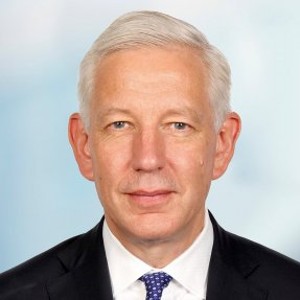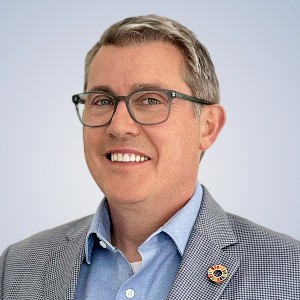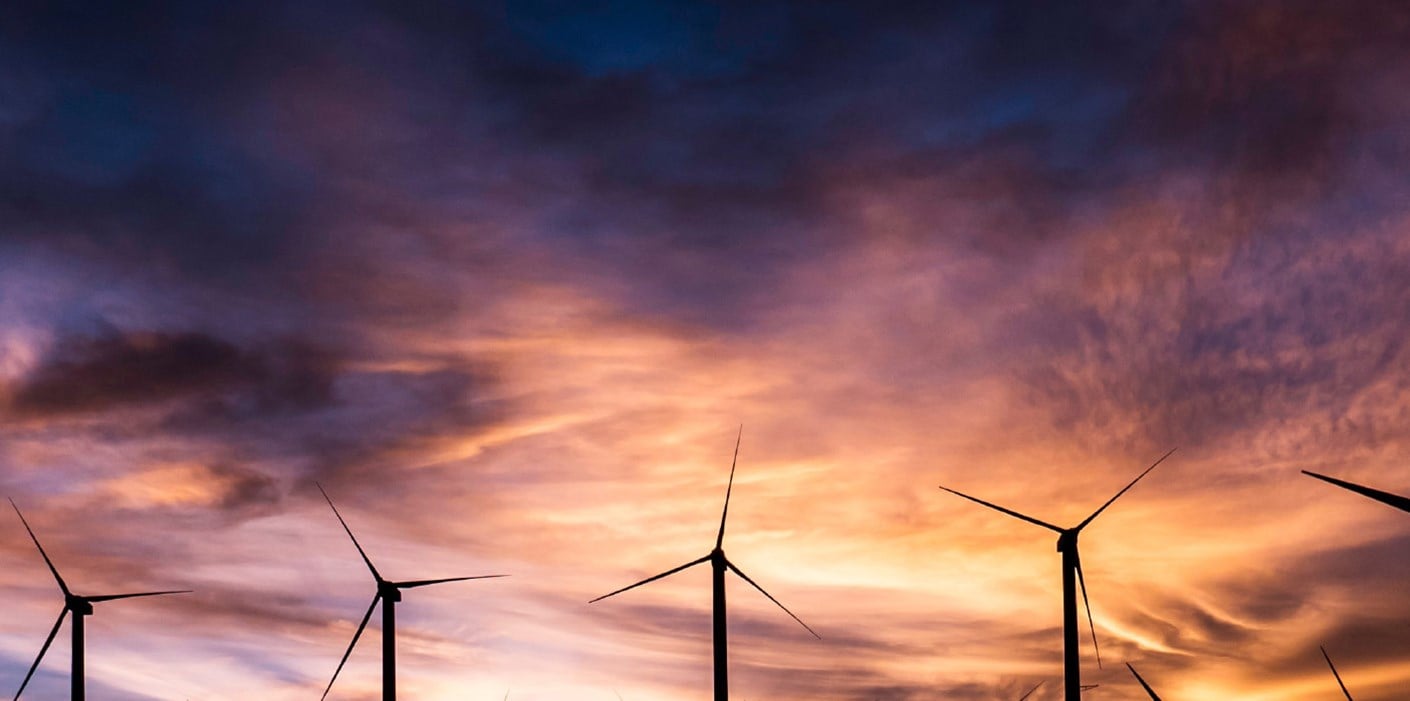In our twentieth episode, Mark Lee talks to Dominic Barton, Chair at Rio Tinto, and Louise Pearce, Global Industry Lead for Mining and Metals at ERM, about the role of mining in the low-carbon energy transition.
Their conversation covers:
- Rio Tinto’s environmental and social strategy
- Decarbonizing mining and metals
- How to increase metals and critical minerals supply
- Derisking mining to attract investment
Subscribe to the podcast:
Podcast transcript Hide
The transcript highlights below have been edited for clarity.
Rio Tinto’s environmental and social strategy
Mark Lee:
Dominic, you joined Rio Tinto's board and almost immediately became chairman in the first half of 2022. What made you want to embrace the role at that time? And what was the state of the company when you came into that seat?
Dominic Barton:
I was attracted to Rio Tinto and the mining industry because I believe that mining is going to play a critical role in the energy transition and how we get to Net Zero by 2050. And many people might think that mining creates a lot of problems, and we definitely have our challenges, but we are essential to making that energy transition by providing the materials that are needed for the batteries and all the renewables and so forth that are required. So that mission excited me a lot.
Rio Tinto is in 35 different countries around the world - in Australia, Canada, the UK where the headquarters are, but also China plays a very important role, Mongolia and the African continent. So, the geographic scope interests me and mining is also fundamental to many country transformations.
I think the final thing is the challenge, Rio Tinto had experienced significant setbacks. We had the blowing up of the Juukan Gorge, which was terrible, so in many ways had lost our social license. People were extraordinarily angry, not only in Western Australia but around the world. And then we had also done a culture survey, which was a pretty troubling set of findings in terms of the bullying, sexual harassment and racism that was going on. So, it's an industry and a company that needs to do more to raise its sights and its performance and the chance to be a part of that also excited me.
Mark Lee:
Can you give us a quick sketch of Rio Tinto’s overall sustainability strategy and how decarbonization fits in that?
Dominic Barton:
Jakob Stausholm, who is the new CEO, put in a set of four objectives, two of which related to the social license and what he called impeccable ESG, which I think is exactly what we need. That’s ensuring that we have the proper relationships with the many traditional owners that actually own the land that we operate on, that's extremely important. And clearly with the Juukan Gorge disaster, that's something we need to do, but I think it's much broader than that, it’s how we work with the traditional owners of the lands that are there and more broadly in the community beyond that, in the countries or societies in which we're operating. So there's a range of elements around the social license.
The environment side, as we've talked about, is largely around decarbonization, but it's also biodiversity. It's using the resources as effectively as possible and monitoring our carbon emissions, setting targets on that, looking for ways to think about recycling. Are there better ways broadly in the system that we can think about in terms of using the materials?
In our long-term incentive program, delivery on the environmental targets that we've set, the decarbonization, is extremely important. That also includes how we're improving our culture, how we operate internally and with our suppliers, customers and other stakeholders in the community. There are very specific measures that actually get translated down into implications for executives in the company.
Decarbonizing mining and metals
Mark Lee:
Where does climate change fit into Rio Tinto’s overall strategy and what role is the company trying to play in the net zero transition?
Dominic Barton:
We've set some very specific, rather aggressive targets, but I think it's appropriate in light of decarbonization to reduce our carbon footprint and emissions by 50% by 2030 and then 100% by 2050, for Scopes 1 and 2 emissions. In terms of Scope 3, just to put this in perspective, the steel industry is responsible for 11% of global carbon emissions. What we do in terms of the iron ore, how we produce, mine and process it makes a big difference. We have a set of targets around decarbonization and that means that we're going to have to look at a whole range of ways of doing things differently. A big piece of that is shifting from fossil fuels to renewable energy.
The biggest source of our carbon footprint is from a number of aluminum smelters, particularly in Queensland, where it is 25%. The simplest thing we could do is to shut them down as they’re coal-fired and are not the lowest on the cost curve, but the assets in Queensland are excellent, it's just that they're coal fired. I'm very excited to say we've now made a very large commitment of $2 billion to shift from coal to renewables, using a combination of solar and wind. From a social perspective, there are thousands of related jobs. We obviously want to make it work and it has to work from a shareholder point of view.
Reducing scope 1 emissions is just shifting fossil fuels to renewables wherever we can. We're also doing this with our trucks and ships that we use or outsource, looking for the most effective ways that we possibly can do that. And we have a whole series of initiatives underway, about 100, looking at how can we do green steel. Are there fossil fuel less dependent ways of processing copper? So in every part of our business, we have initiatives underway to try and reduce that carbon footprint.
And we're not only trying to just do it ourselves, many of those involve partnerships, some with competitors like BHP, but also with university labs. One we're doing is with Stanford University on lithium recycling. We're going to have to recycle these lithium batteries. How do you do that effectively? It's serious investment and people are dedicated to it, but we’re also trying to draw on others, including universities, partners, specialists to be able to push this forward.
The other thing is water. We use water and in some of the places we produce water, but the majority of it is how we use water effectively. We've published where we're using water and what that looks like and how it's changed. We certainly don't have the answers for it, but I think trying to be transparent about that and how we use that resource is extremely important.
And then as I mentioned before, biodiversity, we have a lot of land that we're not mining on, but it's land that we have, and how can we work with that better? Madagascar is a place I'm very excited about. There's been serious destruction of a historic rainforest because people need wood. The energy availability for the population is very low. We are trying our best to rebuild and allow people to use the wood on the sites that we are doing our mining on, so that the community can benefit.
Biodiversity is important and we're struggling a bit with how we can measure progress on that. One of the last few remaining places of the Western chimpanzee is in Guinea, and so we are making sure that when we're building the infrastructure, we're thinking about their migration patterns in this specific case. But again, we've got to try and crawl before we run. There's an urgency, but let's try and deliver.
Increasing metals and critical minerals supply
Mark Lee:
Louise, in the context of what's happening across the industry, with Rio Tinto and other mining and metals companies trying to solve the energy transition puzzles, how does this get lined up with customer and societal expectations, so that all these investments, programs and the myriad of things that Dominic has just said, actually make sense and meet the needs of the people on the other side?
Louise Pearce:
What we're seeing in terms of customer demands in mining and metals, because it's such a primary industry, there's a lot of other stakeholders at play there. So not just the customer, you've got the regulators, investors, employees, media, important indigenous rights holders and activists etc. So it's quite a complex demand in terms of the ESG part of it. Especially with the demand for critical minerals and those metals and materials that will support electrification, which include copper and iron ore for steel, etc. There's absolutely no doubt that the increase in demand is 20-fold for most materials over the next decade or two, but the demand is also saying we want to do it sustainably.
We're at a volatile point of view because you've got companies like Rio Tinto who are really trying to match investment to what the demands are, and the needs are, against the backdrop of the market. That's not necessarily reflected in commodity price or investment itself and it's becoming a little bit cheaper to buy a mine than to build one properly. I think we're at a real turning point here if we really are going to get to those Net Zero ambitions, I think we've got to really acknowledge how important this sector is to it.
Mark Lee:
I know it's not exactly the same for every commodity or element, but you said we need 20-fold of most items?
Louise Pearce:
Yes, there are lots of different quotes, but there's eight times as much copper in an electrical vehicle as there is in a regular vehicle. You need all the battery metals, the massive growth and infrastructure for steel and the networks that come along with that. So, it's just absolutely enormous how much more we need, to reduce reliance on fossil fuels.
Mark Lee:
Dominic, Louise mentioned it can be cheaper to buy new assets rather than build them. That might make an individual company bigger, but not the overall supply. How does the demand supply balance look to Rio if we need that much more? And what are you doing to try to make the supply flow that we need to build for the future?
Dominic Barton:
I fully agree with what Louise said about the immense demand. If you think about the amount of steel that's in a wind turbine, a Vestas 7.2 MW wind turbine weighs 928 tons, 812 tons of that is steel and you've got 10 tons of aluminum, 6 tons of copper and then other things. You need metal to be able to do the renewables right and what also Louise is saying about copper, aluminum, lithium, is that we are very short.
Unfortunately, it's taking longer to develop these resources and we are investing less as an industry than we ever have over the last 20 years. The global average of the 35 largest mining projects between 2010 and 2019 was 17 years to get the mine up and running in copper. I think for good reasons and bad reasons, but it can go faster. We have to develop more mines to be able to close the gap that we have. The industry, which has been pilloried for not doing good capital allocation in the past. has been very conservative in the last five years.
Right now we're seeing the longer term trend for prices to go up because of that demand supply balance and it's not going to go up in a nice straight line. There'll be fly ups and so forth, but lithium's down right now. If we look at the underlying demand for EV's, for the renewable sector as a whole, for the infrastructure that you and Louise talked about, it just takes metal to be able to do it. Hopefully we're going to recycle more, but we're early days as an industry or society on how we do it.
With that supply demand situation, what's also interesting is our price earnings multiples or basically our valuations. We've got to do something about that, because that makes it difficult to attract capital. Many of the materials that we're providing are actually going into the technology side of things. I think it's going to be a time of a lot of change on that front, how value is appreciated or not, but we’ve got a lot of work to do.
Derisking mining to attract investment
Mark Lee:
Louise, what kind of innovation do we need to see to unlock the capital that's needed to develop mining capacity. What's happening out there to change this really difficult circumstance?
Louise Pearce:
It's two parts, capital allocation over the past decade or 12 years since the last super cycle forced mining companies to be more conservative. That puts risk on. We need much more capital coming into the industry and that means derisking the concerns of the investors. And that means the rhetoric needs to match the performance level. It can't just be that we need mining and metals, therefore invest, it means, we need the investment, but we recognize there's social, environmental and economic challenges, and this is how it's going to come forward.
We really need to think about who's investing and what's not investing. For example, there's not a lot of private money that comes into mining. There's loads of private equity companies that are specific to mining, but the general, the big money doesn't just come in, doesn't gravitate to an industry, the way you think it should. The traditional way for mining is a lot of juniors will go out and find resources and they will develop it and then they build what's called a block model, a proven, accessible resource. But that resource doesn't necessarily consider water, social and economic concerns, it considers economic and accessibility. And so you need to change that.
Dominic touched on being land stewards, the additional value of the land beyond just the resource that's in the land or that was in the land. I think in innovation, we're going to need at some point to see differentiation between commodity prices for green versus brown. Right now, we don't see any of that and I think that makes it very hard for companies like Rio Tinto and others to do the right thing. Equally, I think the industry confuses the investment community and there's lots of different standards out there, they need to be consolidated and consistent. So I think there's a lot of innovation that can be done on both sides.
Mark Lee:
Dominic, you talked earlier about linking ESG performance to executive compensation, can you give us more detail on how Rio measures ESG performance and how you hope ESG performance is going to really accelerate and improve in the next few years?
Dominic Barton:
ESG is not a sideshow, it's core. Two of our four objectives are related to delivering on impeccable ESG and social license. On the “E” part, we have very specific overall targets on decarbonization that we want to hit by 2030 and 2050. We translate that into our short term, but also long-term incentive program for executives.
On the other dimensions, we are looking into social license. The way we're seeing it right now is, we use RepTrak, which is a way to measure how we're perceived in a broad way. But we want to get more detailed on that. So we have an initiative underway to make sure that we're tracking things like, how much supplies are we getting from the local community we're operating in, how many local people are being employed? We have cultural heritage measures on how we're doing on that front in our key locations. There's a number of dimensions that we're trying to pull together to turn into actual short-term incentive performance measures.
We in the industry have actually got pretty good on the safety side, but there is more we can do in terms of measuring our performance on safety. We're also looking at our cultural journey, which is very important given the assessment that was done a couple of years ago by Liz Broderick. And that's not just measuring how we've done and her recommendations. It's looking at what does the diversity look like? Are we losing high performing women in the organization? What's our success rate at hiring people with diversity? There are hard and soft measures. It's not nice words, I guess I'm trying to say is, we're trying to make it specific, but also recognizing that we're also learning as we move forward.
And on the fossil fuel shift to renewables, some of the technologies are changing. We've got to be honest and open about what we're learning and how we see that work, the pressures, the technologies, these are changing. So we’ve got to learn as we move forward, but I think it is important to set aggressive goals because that forces you to learn and shift as you move.
Mark Lee:
Louise, can you compare what's happening in Rio Tinto across industry? Rio's approach covers so many different things. Is this what the mining and metals industry as a whole is trying to do? Give us some context and maybe your crystal ball sense of how this will evolve over the next few years as well?
Louise Pearce:
Absolutely it's really refreshing to hear Dominic articulate some of the great things that Rio Tinto's doing, and really trying to connect all the dots on these impeccable ESG credentials. I think that's definitely the right direction. Long term value matters, that license to operate, it's not just a piece of paper that you get when you develop a mine, you keep it forever, so I think these things all interplay in terms of where value gets created in the near term and the longer term. When it comes to ESG performance or broader sustainability performance, I think again it's about derisking, getting ready for those risks and managing them. And then it's about looking to create the value that comes around it.
It fundamentally comes down to closing the gap between the rhetoric and the performance, and having the right tools to deliver the right outcomes across those fundamental dimensions, including the social, socio-economic, nature, water and carbon. It means you've got to come up with a plausible strategy which is embedded and lived company wide. At ERM we've co-created a concept with our clients and many other stakeholders, around ‘the mine we all want to see’ and what that ambition is. We really want to create something that is different, such that mining and metals becomes the solution and not just known for being part of the problem and the legacy. I think that the leaders out there like Rio Tinto are really doing a tremendous amount to close that gap. But there's a whole lot more to do.
 View all
View all 


